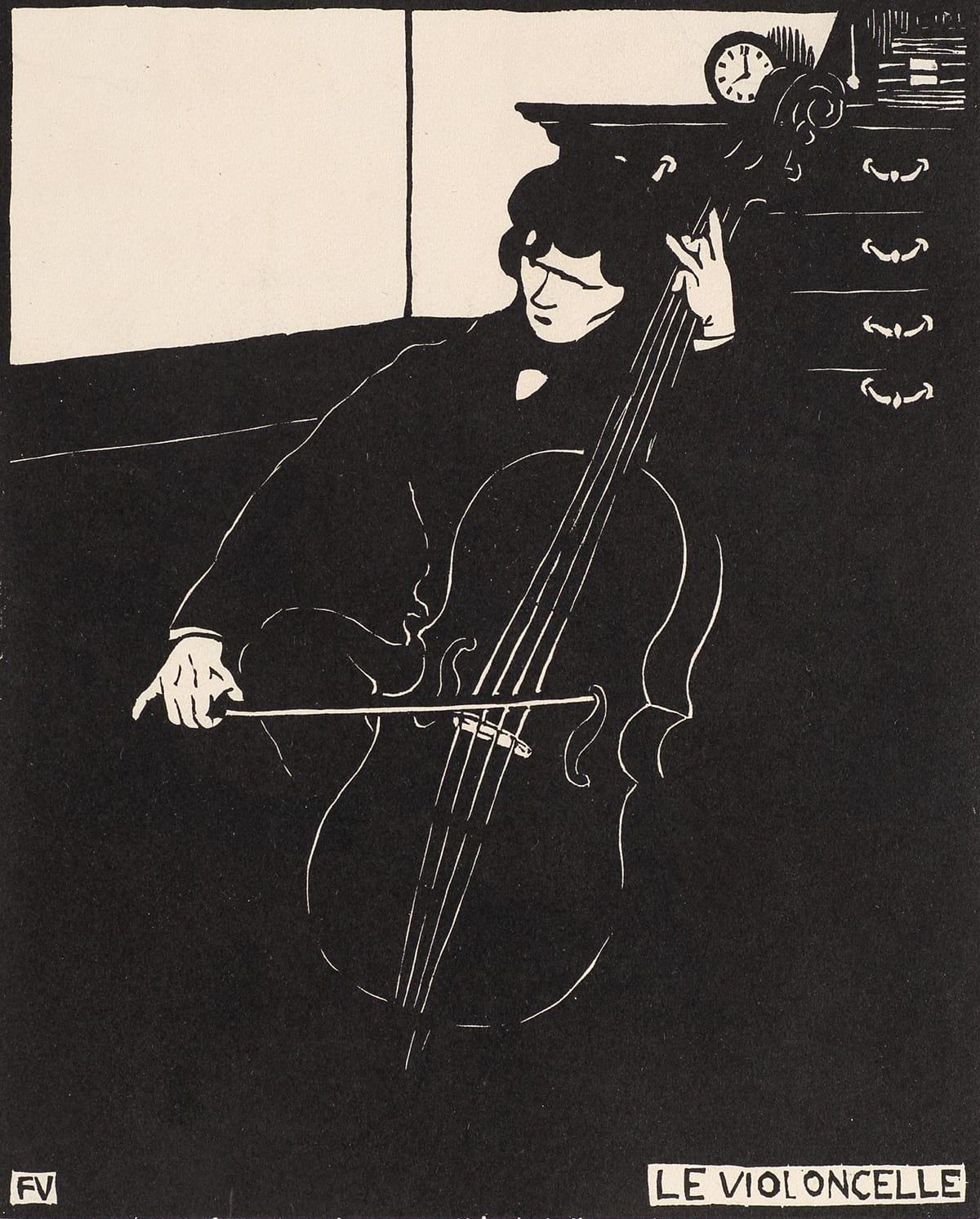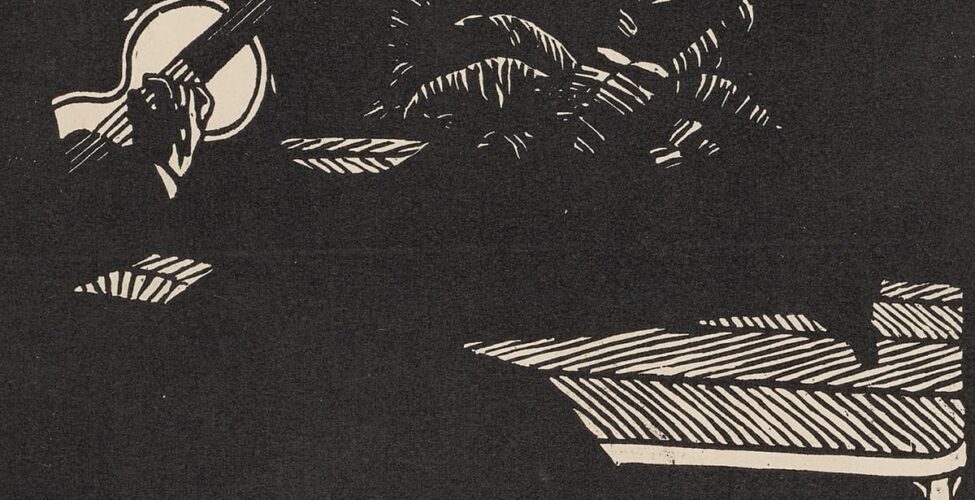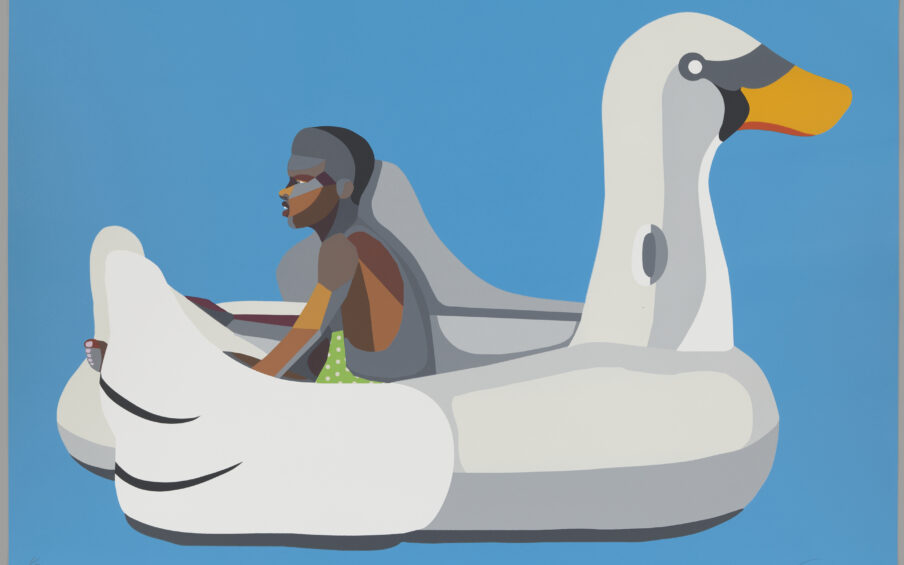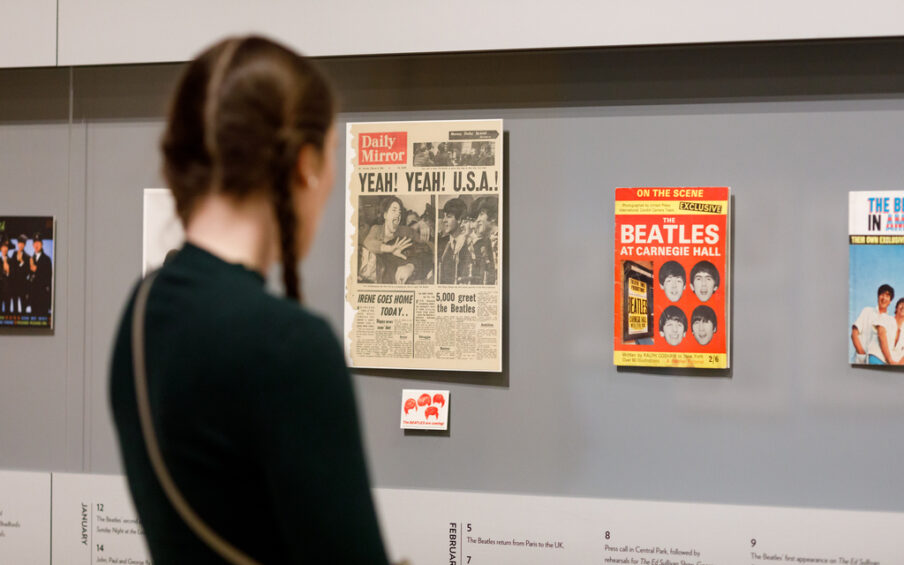In 1896–97, Félix Vallotton captured the private joy and solace of music played only for oneself. In Musical Instruments,” a suite of six woodblock prints, he used the sparest means to depict solitary musicians in comfortable, domestic settings. The Portland Art Museum recently acquired two prints from this series: one depicting a cellist in his parlor and another of a guitarist nearly hidden among ferns in a sunroom.
Although the sitters are known (the cellist has been identified as Belgian performer Joseph Holmann; the guitarist as Louis Schopfer), the prints are not meant as portraits. The emphasis is on the reverie of the musician, rather than his individuality. Vallotton’s technique called on the artist to move from dark to light, making slim cuts in the woodblock matrix to distinguish the arc of a fern frond, the strings of the instrument, or the expressive hands of the musicians. The prints are as elegant, we presume, as the music produced.
—Mary Weaver Chapin, Curator of Prints and Drawings

Félix Vallotton (Swiss, active France, 1865–1925). La Guitare (The Guitar), 1897, and Le Violoncelle (The Cello), 1896, from the series Instruments de Musique (Musical Instruments). Woodcuts on wove paper. Museum Purchase: Portland Fine Print Fair Fund, 2018.62.1; Museum Purchase: Funds provided by Amanda Snyder Purchase Fund and Ann Flowerree, 2020.21.1



